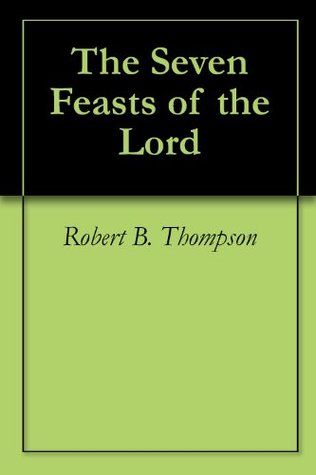- Bible
- Read the Bible
- Bible Versions
- Verse of the Day
- Reading Plans
- Verses by Topic
- Books of the Bible
- Bible Images
- Study
- Commentaries
- Concordances
- Dictionaries
- Encyclopedias
- Sermons
- Bible Atlas & Maps
- BP Wiki
- Devotionals
- Today's Devotionals
- Light of the World
- All Devotionals
- Inspirational Quotes
- More
- Picture Quotes
- Videos
- Inspirational
- Bible Study
- What The Bible Says
- Bible Q&As
- Daily Bread
- Bible by Genre
- Bible Stories
- Random Bible Verse
- Community
- Store
The Seven Feasts of the Lord
by Robert B. Thompson
I use four types of the Bible to present the seven primary aspects of redemption: the seven feasts of the Lord; the Tabernacle of the Congregation; the journey of Israel from Egypt to Canaan; and the seven days of creation. Of these four major types, I use the feasts of the Lord most frequently. They offer such a clear picture of our salvation. The seven feasts are found in Leviticus, Chapter Twenty-three and in other places in the Old Testament.
Please notice in the in the following text how I apply the seven celebrations to the work of salvation in the personality of the believer. It appears that not all Christian believers are aware that our salvation has a specific beginning, a specific process or program, and a conclusion, a fulfillment in Christ. When we do not understand this we may perceive our daily experiences as unrelated, perhaps unsupervised, random happenings.
The first of the seven feasts is the Passover (Leviticus 23:5). The Passover lamb was slain. The blood of the slain lamb was sprinkled on the doorposts of the Israelite dwellings. God did not speak about deliverance from sin at that time but about preservation when the destroying angel passed over Egypt. So it is at the beginning of our salvation. God covers us with the blood of Christ, not to remove our sins but to mark us as holy, separate from the world, belonging to God in a special way.
This is holiness by assignment. Holiness by actual deliverance comes later in the work of salvation.
Please notice in the in the following text how I apply the seven celebrations to the work of salvation in the personality of the believer. It appears that not all Christian believers are aware that our salvation has a specific beginning, a specific process or program, and a conclusion, a fulfillment in Christ. When we do not understand this we may perceive our daily experiences as unrelated, perhaps unsupervised, random happenings.
The first of the seven feasts is the Passover (Leviticus 23:5). The Passover lamb was slain. The blood of the slain lamb was sprinkled on the doorposts of the Israelite dwellings. God did not speak about deliverance from sin at that time but about preservation when the destroying angel passed over Egypt. So it is at the beginning of our salvation. God covers us with the blood of Christ, not to remove our sins but to mark us as holy, separate from the world, belonging to God in a special way.
This is holiness by assignment. Holiness by actual deliverance comes later in the work of salvation.
BUY NOW
Kindle Edition
Published January 28th 2013
Robert B. Thompson
... Show more
© 2025 Bibleportal.com All rights reserved.
